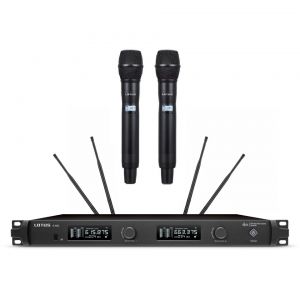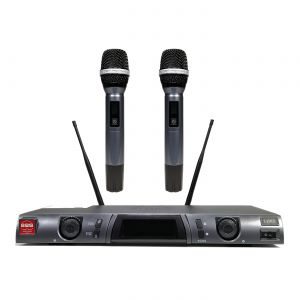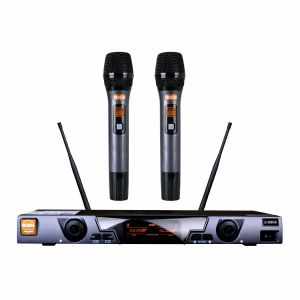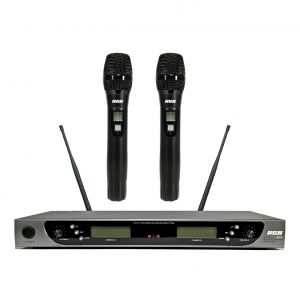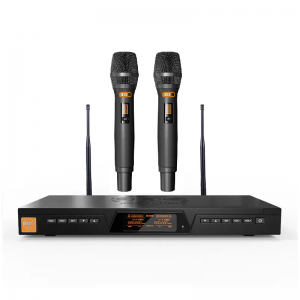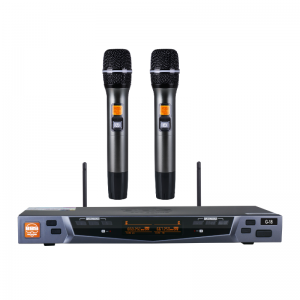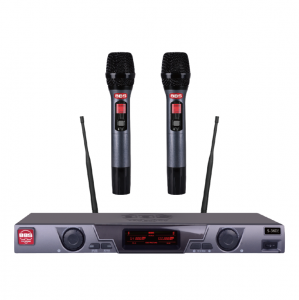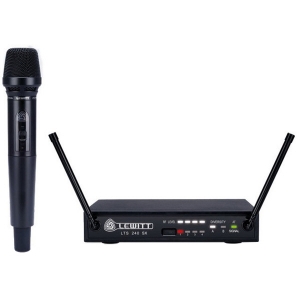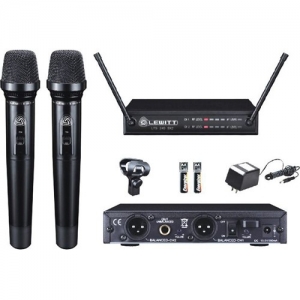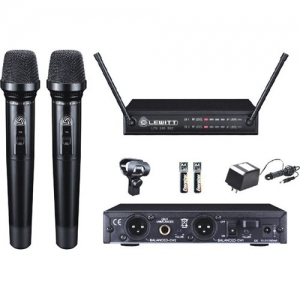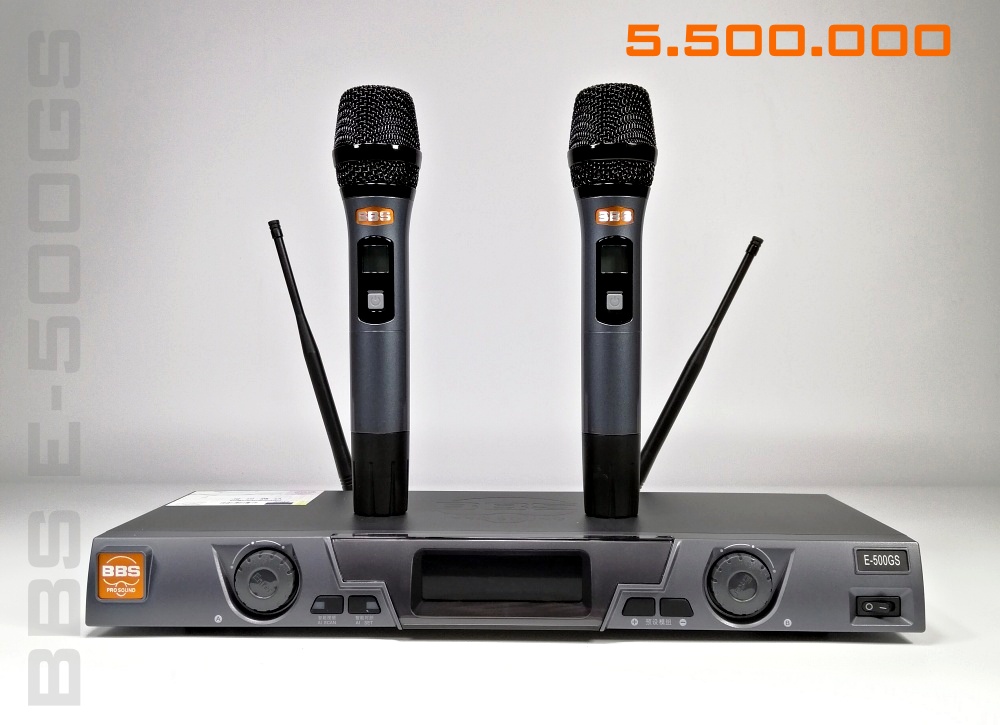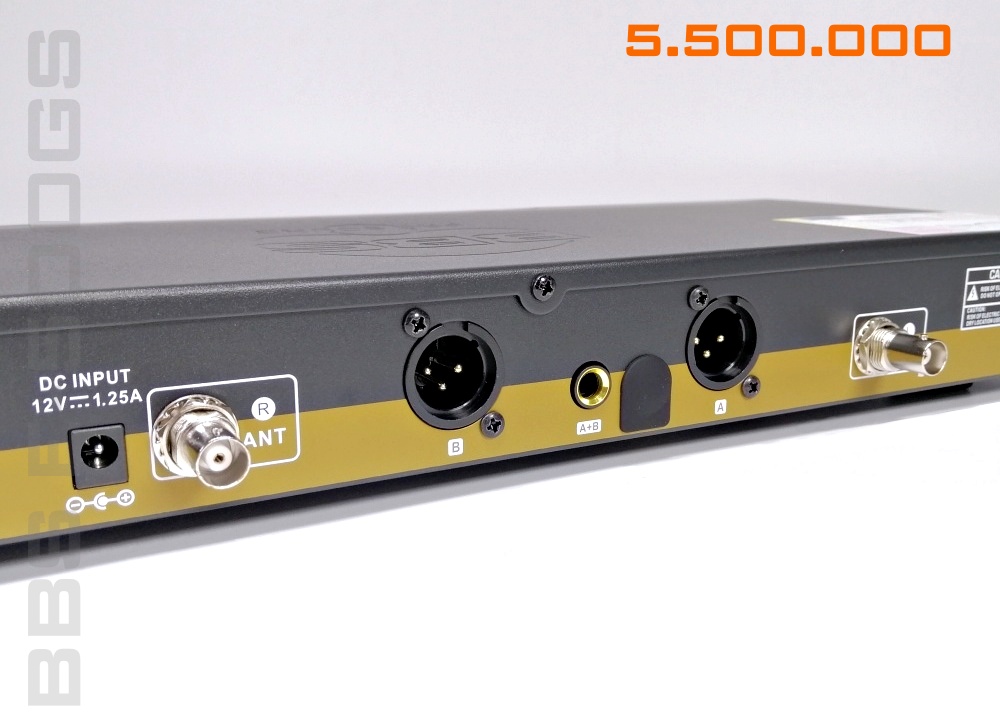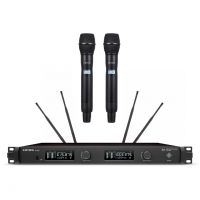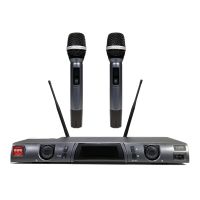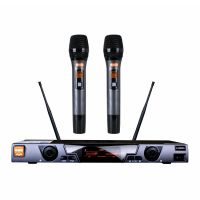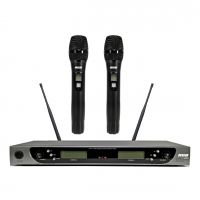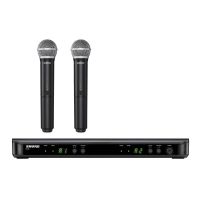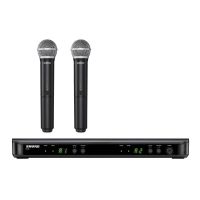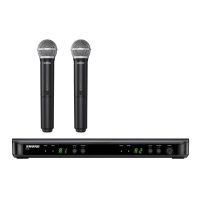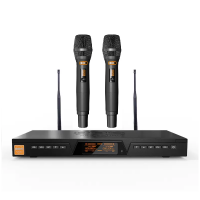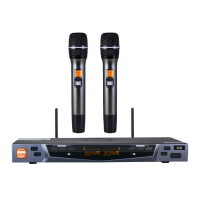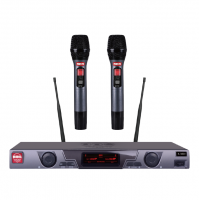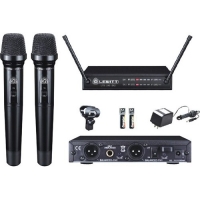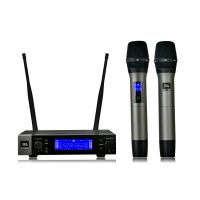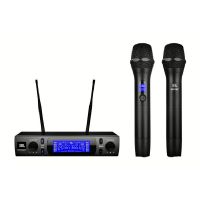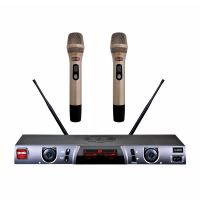SHURE PGA48-LC
SHURE PGA48-LC
Đánh giá 0 lượt đánh giá
0 VND
SẢN PHẨM CHÍNH HÃNG / GIAO HÀNG TOÀN QUỐC
+
Cam kết 100% hàng chính hãng
- Sản phẩm cung cấp bởi Nivo Audio được đảm bảo 100% hàng chính hãng.
+
Bảo hành tiêu chuẩn. 1 đổi 1 trong 30 ngày.
- 1 đổi 1 trong vòng 30 ngày đối với tất cả lỗi phát sinh bởi nhà sản xuất.
+
Miễn phí vận chuyển
- Khách hàng mua hàng được miễn phí vận chuyển. Giao hàng siêu tốc trong 2h đối với khách hàng tại các khu vực: Thành phố Hà Nội ( Nội thành Hà Nội), Thành phố Từ Sơn, Thành phố Bắc Ninh, Thành phố Hưng Yên. Chuyển phát nhanh từ 2 - 4 ngày khu vực: Thành phố Đà Nẵng, Thành phố Hồ Chí Minh
+
Giao hàng toàn quốc, thanh toán COD
- Quý khách có thể đặt mua Online, nhận hàng trên toàn quốc. Thanh toán trực tiếp khi nhận hàng
- Số điện thoại đặt mua hàng Online: 091 550 8880 - 024 22 666 555
Đặt hàng Online (8:00 - 21:00): 091 550 8880 - 0995 666 555
Thông số kỹ thuật SHURE PGA48-LC
| Features |
| ||||||||||||||||
| Specifications |
|
Đọc thêm
Deal trong tuần
LOTUS S-600
8.500.000 VND6.500.000 VNDMicro không dây LOTUS S-600 là mẫu micro cao cấp được sản xuất bởi hãng LOTUS. Micro LOTUS S-600 được thiết kế với những tính năng phù hợp cho ứng dụng âm thanh chuyên nghiệp, âm thanh karaoke cao cấp, bar, hội trường, các chương trình âm thanh biểu diễn vừa và nhỏ.
Micro LOTUS S-600 được thiết kế với các đường nét tinh tế, vừa đơn giản lại sang trọng, mỗi một chi tiết của sản phẩm đều toát lên sự tinh xảo, kĩ lưỡng đem lại cảm giác thân thiện cho người dùng.
Micro LOTUS S-600 sử dụng công nghệ tiếp nhận đa dạng thực sự, tần số UHF với giải tần số từ 610 -665Mhz giúp cho micro hoạt động ổn định. Viên nang công nghệ Dynamic giúp kiểm soát dải tần số cao, tăng cường hiệu suất âm thanh và hạn chế tiếng hú ( feedback ).
Sản phẩm micro không dây cao cấp được nhập khẩu và phân phối bởi Pro Asia Electronics.(212)23 %BBS E-250GS
5.500.000 VND4.800.000 VNDMicro không dây BBS E-250 GS Hệ thống micro không dây kết hợp âm thanh chất lượng chuyên nghiệp với thiết lập đơn giản và giao diện trực quan cho hiệu suất âm thanh hoàn hảo. Micro sử dụng năm loại mã nhận dạng gốc giúp ngăn chặn các tần số nhiễu xuyên âm.
Tính năng cảm ứng thông minh, tự động tắt / bật tín hiệu. Micro sẽ tự động tắt tín hiệu sau 3 giây khi đặt micro xuống bàn và tự động hoạt động trở lại khi cầm micro lên.
Công nghệ dynamic kép nén trực tuyến, giúp tự động cân bằng âm thanh, kiểm soát giải tần số cao và hạn chế tiếng hú (feedback).
Tính năng tự động dò tìm sóng phù hợp “sóng sạch”, tránh được tình trạng nhiễu sóng. Phạm vi lựa chọn tần số với 200 kênh UHF.
Micro tích hợp 5 mức độ cài đặt chống hú giúp micro hoạt động tốt ở tất cả các hệ thống âm thanh khác nhau. Hiệu suất âm thanh đạt được hiệu quả tốt nhất mà không cần sử dụng nhiều thiết bị hỗ trợ.
Micro được thiết kế đặc biệt cho các ứng dụng như biểu diễn , sự kiện trực tiếp , Karaoke chuyên nghiệp...
Sản phẩm hàng chính hãng được nhập khẩu và phân phối bởi Pro Asia Electronics(136)12 %BBS E-500GS
6.500.000 VND5.500.000 VNDMicro không dây BBS E-500GS Hệ thống không dây kết hợp âm thanh chất lượng chuyên nghiệp với thiết lập đơn giản và giao diện trực quan cho hiệu suất âm thanh hoàn hảo.
Micro sử dụng năm loại mã nhận dạng gốc giúp ngăn chặn các tần số nhiễu xuyên âm. Phạm vi lựa chọn tần số với 200 kênh UHF. Đầu thu với thiết kế siêu cardioid phù hợp cho giọng hát với tầm trung dầy và ấm, kiểm soát dải tần số cao, tăng cường hiệu suất âm thanh.
Tính năng cảm ứng thông minh, tự động tắt / bật tín hiệu ở chế độ chờ hoạt động. Tự động ngắt tín hiệu âm thanh đầu vào khi đặt micro xuống bàn và tự động hoạt động trở lại khi cầm micro lên giúp chống hú và dội âm từ mặt bàn.
Micro tích hợp 5 mức độ cài đặt chống hú giúp micro hoạt động tốt ở tất cả các hệ thống âm thanh khác nhau. Hiệu suất âm thanh đạt được hiệu quả tốt nhất mà không cần sử dụng nhiều thiết bị hỗ trợ.
Công nghệ dynamic kép nén trực tuyến, giúp tự động cân bằng âm thanh, kiểm soát giải tần số cao và hạn chế tiếng hú ( feedback ).
Micro không dây BBS E-500GS được thiết kế đặc biệt cho các ứng dụng như biểu diễn , sự kiện trực tiếp , Karaoke chuyên nghiệp...
Sản phẩm hàng chính hãng được nhập khẩu và phân phối bởi Pro Asia Electronics - www.bbs.com.vn(215)15 %RGB A-200
3.600.000 VND1.950.000 VNDMicro không dây RGB A-200. Hệ thống micro không dây kết hợp âm thanh chất lượng chuyên nghiệp với thiết lập đơn giản và giao diện trực quan cho hiệu suất âm thanh hoàn hảo. Đầu thu Dynamic với thiết kế đặc biệt, cho giọng hát với tầm trung dầy và ấm, kiểm soát dải tần số cao, tăng cường hiệu suất âm thanh.
Micro sử dụng công nghệ tổng hợp tần số đa kênh vòng khóa pha kỹ thuật số PLL để cung cấp 160 kênh ở tần số trong băng thông tần số 50 MHz. Việc lựa chọn kênh giúp dễ dàng tránh được nhiều loại nhiễu khác nhau và đáp ứng được yêu cầu khi lắp đặt nhiều thiết bị.
Sản phẩm thiết kế phù hợp cho các ứng dụng âm thanh karaoke, hội trường, phòng họp, sân khấu biểu diễn... Hàng nhập khẩu chính hãng được phân phối bởi Pro Asia Electronics.(239)45 %BBS YN58
3.600.000 VND2.600.000 VNDMicro không dây BBS YN58 Hệ thống micro không dây kết hợp âm thanh chất lượng chuyên nghiệp với thiết lập đơn giản và giao diện trực quan cho hiệu suất âm thanh hoàn hảo.
Công nghệ dynamic kép nén trực tuyến, giúp tự động cân bằng âm thanh, kiểm soát giải tần số cao và hạn chế tiếng hú (feedback). Phạm vi lựa chọn tần số với 40 kênh UHF.(86)27 %BBS G18
4.500.000 VND3.500.000 VNDMicro không dây BBS G18 Hệ thống micro không dây kết hợp âm thanh chất lượng chuyên nghiệp với thiết lập đơn giản và giao diện trực quan cho hiệu suất âm thanh hoàn hảo. Micro sử dụng năm loại mã nhận dạng gốc giúp ngăn chặn các tần số nhiễu xuyên âm. Tính năng cảm ứng thông minh, tự động tắt / bật tín hiệu. Micro sẽ tự động tắt tín hiệu sau 3 giây khi đặt micro xuống bàn và tự động hoạt động trở lại khi cầm micro lên. Sau 5 phút không sử dụng micro tự chuyển sang chế độ ngắt pin (không tốn pin nữa ). Sau 15 phút thì micro chuyển sang chế độ tắt toàn bộ. Công nghệ dynamic kép nén trực tuyến, giúp tự động cân bằng âm thanh, kiểm soát giải tần số cao và hạn chế tiếng hú (feedback). Phạm vi lựa chọn tần số với 40 kênh UHF.(63)22 %BBS S-360E
6.500.000 VND5.500.000 VNDMicro không dây BBS S-360E Hệ thống micro không dây kết hợp âm thanh chất lượng chuyên nghiệp với thiết lập đơn giản và giao diện trực quan cho hiệu suất âm thanh hoàn hảo. Micro sử dụng năm loại mã nhận dạng gốc giúp ngăn chặn các tần số nhiễu xuyên âm. Công nghệ dynamic kép nén trực tuyến, giúp tự động cân bằng âm thanh, kiểm soát giải tần số cao và hạn chế tiếng hú (feedback). Tính năng cảm ứng thông minh, tự động tắt / bật tín hiệu. Micro sẽ tự động tắt tín hiệu sau 5 giây khi đặt micro xuống bàn và tự động hoạt động trở lại khi cầm micro lên. Sau 5 phút không sử dụng micro tự chuyển sang chế độ ngắt pin (không tốn pin nữa ). Sau 15 phút thì micro chuyển sang chế độ tắt toàn bộ. Để tắt và bật tính năng tự ngắt tiếng này bấm và giữ nút GS ở đuôi micro khoảng 3 giây. Trên màn hình sẽ hiện ON ( Bật chế độ tự ngắt thông minh) hoặc OFF ( Tắt chế độ tự ngắt thông minh). Tính năng tự động dò tìm sóng phù hợp “sóng sạch”, tránh được tình trạng nhiễu sóng, rớt sóng. Phạm vi lựa chọn tần số với 200 kênh UHF.(83)15 %LEWITT LTS 240 Diversity D
6.950.000 VND5.500.000 VNDLEWITT LTS 240 Diversity D là hệ thống micro không dây chất lượng cao. Sản phẩm được sản xuất theo tiêu chuẩn chất lượng của Châu Âu. Thương hiệu Austria ( Áo). Micro có hiệu suất ổn định, hoạt động thông minh và chất lượng âm thanh vượt trội. Hoàn toàn phù hợp để sử dụng trên các sân khấu nhỏ, hợp đồng biểu diễn tại câu lạc bộ, sự kiện khu vực hoặc trong nhà thờ hoặc biểu diễn karaoke., các hệ thống không dây với mức giá hợp lý chịu được sự khắc nghiệt của giai đoạn sử dụng thường xuyên và mang lại hiệu suất đáng tin cậy trong bất kỳ thiết lập. Thuận tiện và dễ dàng thiết lập làm cho các hệ thống không dây là sự lựa chọn hoàn hảo cho các ban nhạc trẻ, nghệ sĩ và các chuyên gia karaoke. Hệ thống sử dụng 01 tay micro không dây với đầu thu Dynamic.
Sản phẩm được sản xuất theo tiêu chuẩn chất lượng của Châu Âu. Thương hiệu Austria ( Áo)
(68)20 %LEWITT LTS 240 Dual D
8.500.000 VND6.500.000 VNDMicro Lewitt LTS 240 Dual D Hệ thống không dây chắc chắn, đáng tin cậy và dễ sử dụng hoàn toàn phù hợp để sử dụng trên các sân khấu nhỏ, tại các buổi biểu diễn của câu lạc bộ, các sự kiện khu vực hoặc lắp đặt trong các hệ thống âm thanh cao cấp trong nhà.
Micrô được thiết kế để mang lại hiệu suất đáng tin cậy trong mọi môi trường. Thiết lập thuận tiện và dễ dàng làm cho các hệ thống này trở thành sự lựa chọn hoàn hảo cho các ban nhạc trẻ, nghệ sĩ giải trí và chuyên gia karaoke.
Sản phẩm được sản xuất theo tiêu chuẩn chất lượng của Châu Âu. Thương hiệu Austria ( Áo).(82)23 %LEWITT LTS 240 Dual C
10.500.000 VND7.500.000 VNDMicro Lewitt LTS 240 Dual C Hệ thống không dây chắc chắn, đáng tin cậy và dễ sử dụng hoàn toàn phù hợp để sử dụng trên các sân khấu nhỏ, tại các buổi biểu diễn của câu lạc bộ, các sự kiện khu vực hoặc lắp đặt trong các hệ thống âm thanh cao cấp trong nhà.
Micrô được thiết kế để mang lại hiệu suất đáng tin cậy trong mọi môi trường. Thiết lập thuận tiện và dễ dàng làm cho các hệ thống này trở thành sự lựa chọn hoàn hảo cho các ban nhạc trẻ, nghệ sĩ giải trí và chuyên gia karaoke.
Sản phẩm được sản xuất theo tiêu chuẩn chất lượng của Châu Âu. Thương hiệu Austria ( Áo)(36)28 %
Sản phẩm liên quan
LOTUS S-600
6.500.000 VNDMicro không dây LOTUS S-600 là mẫu micro cao cấp được sản xuất bởi hãng LOTUS. Micro LOTUS S-600 được thiết kế với những tính năng phù hợp cho ứng dụng âm thanh chuyên nghiệp, âm thanh karaoke cao cấp, bar, hội trường, các chương trình âm thanh biểu diễn vừa và nhỏ.
Micro LOTUS S-600 được thiết kế với các đường nét tinh tế, vừa đơn giản lại sang trọng, mỗi một chi tiết của sản phẩm đều toát lên sự tinh xảo, kĩ lưỡng đem lại cảm giác thân thiện cho người dùng.
Micro LOTUS S-600 sử dụng công nghệ tiếp nhận đa dạng thực sự, tần số UHF với giải tần số từ 610 -665Mhz giúp cho micro hoạt động ổn định. Viên nang công nghệ Dynamic giúp kiểm soát dải tần số cao, tăng cường hiệu suất âm thanh và hạn chế tiếng hú ( feedback ).
Sản phẩm micro không dây cao cấp được nhập khẩu và phân phối bởi Pro Asia Electronics.(212)BBS E-250GS
4.800.000 VNDMicro không dây BBS E-250 GS Hệ thống micro không dây kết hợp âm thanh chất lượng chuyên nghiệp với thiết lập đơn giản và giao diện trực quan cho hiệu suất âm thanh hoàn hảo. Micro sử dụng năm loại mã nhận dạng gốc giúp ngăn chặn các tần số nhiễu xuyên âm.
Tính năng cảm ứng thông minh, tự động tắt / bật tín hiệu. Micro sẽ tự động tắt tín hiệu sau 3 giây khi đặt micro xuống bàn và tự động hoạt động trở lại khi cầm micro lên.
Công nghệ dynamic kép nén trực tuyến, giúp tự động cân bằng âm thanh, kiểm soát giải tần số cao và hạn chế tiếng hú (feedback).
Tính năng tự động dò tìm sóng phù hợp “sóng sạch”, tránh được tình trạng nhiễu sóng. Phạm vi lựa chọn tần số với 200 kênh UHF.
Micro tích hợp 5 mức độ cài đặt chống hú giúp micro hoạt động tốt ở tất cả các hệ thống âm thanh khác nhau. Hiệu suất âm thanh đạt được hiệu quả tốt nhất mà không cần sử dụng nhiều thiết bị hỗ trợ.
Micro được thiết kế đặc biệt cho các ứng dụng như biểu diễn , sự kiện trực tiếp , Karaoke chuyên nghiệp...
Sản phẩm hàng chính hãng được nhập khẩu và phân phối bởi Pro Asia Electronics(136)BBS E-500GS
5.500.000 VNDMicro không dây BBS E-500GS Hệ thống không dây kết hợp âm thanh chất lượng chuyên nghiệp với thiết lập đơn giản và giao diện trực quan cho hiệu suất âm thanh hoàn hảo.
Micro sử dụng năm loại mã nhận dạng gốc giúp ngăn chặn các tần số nhiễu xuyên âm. Phạm vi lựa chọn tần số với 200 kênh UHF. Đầu thu với thiết kế siêu cardioid phù hợp cho giọng hát với tầm trung dầy và ấm, kiểm soát dải tần số cao, tăng cường hiệu suất âm thanh.
Tính năng cảm ứng thông minh, tự động tắt / bật tín hiệu ở chế độ chờ hoạt động. Tự động ngắt tín hiệu âm thanh đầu vào khi đặt micro xuống bàn và tự động hoạt động trở lại khi cầm micro lên giúp chống hú và dội âm từ mặt bàn.
Micro tích hợp 5 mức độ cài đặt chống hú giúp micro hoạt động tốt ở tất cả các hệ thống âm thanh khác nhau. Hiệu suất âm thanh đạt được hiệu quả tốt nhất mà không cần sử dụng nhiều thiết bị hỗ trợ.
Công nghệ dynamic kép nén trực tuyến, giúp tự động cân bằng âm thanh, kiểm soát giải tần số cao và hạn chế tiếng hú ( feedback ).
Micro không dây BBS E-500GS được thiết kế đặc biệt cho các ứng dụng như biểu diễn , sự kiện trực tiếp , Karaoke chuyên nghiệp...
Sản phẩm hàng chính hãng được nhập khẩu và phân phối bởi Pro Asia Electronics - www.bbs.com.vn(215)RGB A-200
1.950.000 VNDMicro không dây RGB A-200. Hệ thống micro không dây kết hợp âm thanh chất lượng chuyên nghiệp với thiết lập đơn giản và giao diện trực quan cho hiệu suất âm thanh hoàn hảo. Đầu thu Dynamic với thiết kế đặc biệt, cho giọng hát với tầm trung dầy và ấm, kiểm soát dải tần số cao, tăng cường hiệu suất âm thanh.
Micro sử dụng công nghệ tổng hợp tần số đa kênh vòng khóa pha kỹ thuật số PLL để cung cấp 160 kênh ở tần số trong băng thông tần số 50 MHz. Việc lựa chọn kênh giúp dễ dàng tránh được nhiều loại nhiễu khác nhau và đáp ứng được yêu cầu khi lắp đặt nhiều thiết bị.
Sản phẩm thiết kế phù hợp cho các ứng dụng âm thanh karaoke, hội trường, phòng họp, sân khấu biểu diễn... Hàng nhập khẩu chính hãng được phân phối bởi Pro Asia Electronics.(239)SHURE BLX288/PG58
20.390.000 VNDMicro không dây Shure BLX288/PG58 được thiết kế với tiêu chuẩn quốc tế. Công nghệ hiện đại đáp ứng tần số rộng và độ khử tiếng ổn thấp cao. Micro karaoke này là sự kết hợp hoàn hảo từ các thiết bị bộ nhận BLX288A với hai kênh micro, micro cầm tay PG58. Mang lại chất lượng âm thanh trung thực tuyệt vời nhất.(2)SHURE BLX288/B58
25.390.000 VNDMicro không dây SHURE BLX288/B58 được thiết kế với tiêu chuẩn quốc tế. Công nghệ hiện đại đáp ứng tần số rộng và độ khử tiếng ổn thấp cao. Micro karaoke này là sự kết hợp hoàn hảo từ các thiết bị bộ nhận BLX288A với hai kênh micro, micro cầm tay với viên nang Beta 58. Mang lại chất lượng âm thanh trung thực tuyệt vời nhất.(2)SHURE BLX288/SM58
22.690.000 VNDMicro không dây SHURE BLX288/SM58 được thiết kế với tiêu chuẩn quốc tế. Công nghệ hiện đại đáp ứng tần số rộng và độ khử tiếng ổn thấp cao. Micro karaoke này là sự kết hợp hoàn hảo từ các thiết bị bộ nhận BLX288A với hai kênh micro, micro cầm tay với viên nang SM58. Mang lại chất lượng âm thanh trung thực tuyệt vời nhất.(2)SHURE SVX288/PG58
15.160.000 VNDMicro không dây SHURE SVX288/PG58. Được giới thiệu vào năm 2010, dòng SVX là hệ thống không dây sản xuất cho thị trường karaoke. Máy phát cầm tay SVX 2 - đầu ra RF tối đa 1 mW hoặc 10mW (tùy thuộc vào quốc gia) được chọn bằng công tắc; 8 kênh RF được chọn bằng công tắc; công tắc bật/tắt có đèn LED nguồn; hoạt động bằng hai pin AA trong tối đa 10 giờ; được cung cấp với phần tử micrô PG28 hoặc phần tử micrô PG58.Bộ thu đa dạng SVX 4 - 8 kênh RF được chọn bằng công tắc; Đầu ra mức mic XLR cân bằng - công tắc Mic/Line liền kề cung cấp mức tăng bổ sung 20 dB; đầu ra mức thiết bị của giắc cắm điện thoại cái ¼" không cân bằng; chiết áp điều chỉnh tiếng ồn; đèn LED nguồn, đèn LED âm thanh; Đèn LED ăng-ten RF A, đèn LED ăng-ten RF B; hoạt động ở mức điện áp 12 đến 18 Vdc với dòng điện hoạt động là 130 mA;(3)BBS YN58
2.600.000 VNDMicro không dây BBS YN58 Hệ thống micro không dây kết hợp âm thanh chất lượng chuyên nghiệp với thiết lập đơn giản và giao diện trực quan cho hiệu suất âm thanh hoàn hảo.
Công nghệ dynamic kép nén trực tuyến, giúp tự động cân bằng âm thanh, kiểm soát giải tần số cao và hạn chế tiếng hú (feedback). Phạm vi lựa chọn tần số với 40 kênh UHF.(86)BBS G18
3.500.000 VNDMicro không dây BBS G18 Hệ thống micro không dây kết hợp âm thanh chất lượng chuyên nghiệp với thiết lập đơn giản và giao diện trực quan cho hiệu suất âm thanh hoàn hảo. Micro sử dụng năm loại mã nhận dạng gốc giúp ngăn chặn các tần số nhiễu xuyên âm. Tính năng cảm ứng thông minh, tự động tắt / bật tín hiệu. Micro sẽ tự động tắt tín hiệu sau 3 giây khi đặt micro xuống bàn và tự động hoạt động trở lại khi cầm micro lên. Sau 5 phút không sử dụng micro tự chuyển sang chế độ ngắt pin (không tốn pin nữa ). Sau 15 phút thì micro chuyển sang chế độ tắt toàn bộ. Công nghệ dynamic kép nén trực tuyến, giúp tự động cân bằng âm thanh, kiểm soát giải tần số cao và hạn chế tiếng hú (feedback). Phạm vi lựa chọn tần số với 40 kênh UHF.(63)BBS S-360E
5.500.000 VNDMicro không dây BBS S-360E Hệ thống micro không dây kết hợp âm thanh chất lượng chuyên nghiệp với thiết lập đơn giản và giao diện trực quan cho hiệu suất âm thanh hoàn hảo. Micro sử dụng năm loại mã nhận dạng gốc giúp ngăn chặn các tần số nhiễu xuyên âm. Công nghệ dynamic kép nén trực tuyến, giúp tự động cân bằng âm thanh, kiểm soát giải tần số cao và hạn chế tiếng hú (feedback). Tính năng cảm ứng thông minh, tự động tắt / bật tín hiệu. Micro sẽ tự động tắt tín hiệu sau 5 giây khi đặt micro xuống bàn và tự động hoạt động trở lại khi cầm micro lên. Sau 5 phút không sử dụng micro tự chuyển sang chế độ ngắt pin (không tốn pin nữa ). Sau 15 phút thì micro chuyển sang chế độ tắt toàn bộ. Để tắt và bật tính năng tự ngắt tiếng này bấm và giữ nút GS ở đuôi micro khoảng 3 giây. Trên màn hình sẽ hiện ON ( Bật chế độ tự ngắt thông minh) hoặc OFF ( Tắt chế độ tự ngắt thông minh). Tính năng tự động dò tìm sóng phù hợp “sóng sạch”, tránh được tình trạng nhiễu sóng, rớt sóng. Phạm vi lựa chọn tần số với 200 kênh UHF.(83)LEWITT LTS 240 Diversity D
5.500.000 VNDLEWITT LTS 240 Diversity D là hệ thống micro không dây chất lượng cao. Sản phẩm được sản xuất theo tiêu chuẩn chất lượng của Châu Âu. Thương hiệu Austria ( Áo). Micro có hiệu suất ổn định, hoạt động thông minh và chất lượng âm thanh vượt trội. Hoàn toàn phù hợp để sử dụng trên các sân khấu nhỏ, hợp đồng biểu diễn tại câu lạc bộ, sự kiện khu vực hoặc trong nhà thờ hoặc biểu diễn karaoke., các hệ thống không dây với mức giá hợp lý chịu được sự khắc nghiệt của giai đoạn sử dụng thường xuyên và mang lại hiệu suất đáng tin cậy trong bất kỳ thiết lập. Thuận tiện và dễ dàng thiết lập làm cho các hệ thống không dây là sự lựa chọn hoàn hảo cho các ban nhạc trẻ, nghệ sĩ và các chuyên gia karaoke. Hệ thống sử dụng 01 tay micro không dây với đầu thu Dynamic.
Sản phẩm được sản xuất theo tiêu chuẩn chất lượng của Châu Âu. Thương hiệu Austria ( Áo)
(68)LEWITT LTS 240 Dual D
6.500.000 VNDMicro Lewitt LTS 240 Dual D Hệ thống không dây chắc chắn, đáng tin cậy và dễ sử dụng hoàn toàn phù hợp để sử dụng trên các sân khấu nhỏ, tại các buổi biểu diễn của câu lạc bộ, các sự kiện khu vực hoặc lắp đặt trong các hệ thống âm thanh cao cấp trong nhà.
Micrô được thiết kế để mang lại hiệu suất đáng tin cậy trong mọi môi trường. Thiết lập thuận tiện và dễ dàng làm cho các hệ thống này trở thành sự lựa chọn hoàn hảo cho các ban nhạc trẻ, nghệ sĩ giải trí và chuyên gia karaoke.
Sản phẩm được sản xuất theo tiêu chuẩn chất lượng của Châu Âu. Thương hiệu Austria ( Áo).(82)Micro không dây JBL VM200
6.600.000 VNDMicro không dây JBL VM200 là mẫu micro karaoke được sản xuất bởi hãng JBL. Sản phẩm là phiên bản nâng cấp và cải tiến tốt hơn so với các phiên bản micro trước đây.
Các tính năng như Auto Scan tự động tìm kiếm các tần số có sẵn. Tính năng Sync đồng bộ tần số giữa đầu thu và tay cầm micro không dây.
Mô-đun cài sẵn cung cấp các cài đặt trước có thể lựa chọn và lưu trữ để dễ dàng đồng bộ hóa.
Tự động tắt tiếng, Tự động đánh thức và Tự động ngủ giám sát hệ thống một cách nhất quán để đảm bảo hiệu suất cao nhất và mức tiêu thụ năng lượng hiệu quả.
Màn hình LCD trên máy thu và micrô cung cấp trạng thái hệ thống và mức pin.
Micro JBL VM200 được thiết kế với những tính năng phù hợp cho ứng dụng như karaoke nên sản phẩm phù hợp lắp đặt cho các dàn karaoke gia đình, phòng karaoke kinh doanh hay các hội trường và các quán bar nhỏ.
Bổ sung hoàn hảo cho loa karaoke JBL Entertainment, cho giải pháp âm thanh KTV cao cấp.(2)Micro không dây JBL VM300
7.900.000 VNDMicro không dây JBL VM300 được thiết kế tinh tế với những tính năng cao cấp
Mô-đun cài sẵn chọn một cặp tần số hoặc kênh cho cả kênh A và kênh B.
Tự động quét tìm kiếm tần số/kênh sạch một cách tự động
Tính năng đồng bộ Sync cho phép đồng bộ tần số của hai HT300 cùng một lúc
Auto Mute sẽ tự động tắt tiếng khi micro ở trạng thái tĩnh trong khoảng 3 giây. Tự động bật tiếng khi micro chuyển động.
Chế độ Tự động Ngủ sẽ tự động tắt micro cầm tay không dây khi thiết bị ở trạng thái tĩnh trong khoảng 8 phút.
Micro JBL VM300 có chất âm dầy và ấm với dải cao sáng tiếng. Micro phù hợp lắp đặt với hệ thống âm thanh karaoke cao cấp, hội trường, phòng karaoke kinh doanh…(4)BBS K-380
VNDMicro BBS K-380 Hệ thống micro không dây kết hợp âm thanh chất lượng chuyên nghiệp với thiết lập đơn giản và giao diện trực quan cho hiệu suất âm thanh hoàn hảo. Micro sử dụng năm loại mã nhận dạng gốc giúp ngăn chặn các tần số nhiễu xuyên âm.
Thiết kế tay cầm bằng hợp kim, chụp micro bằng thép chống gỉ, lớp phủ nano chống bám vân tay, trơn trượt, trầy xước và bạc màu. Tính năng cảm biến gia tốc, nếu trong quá trình hát mà bị rơi micro xuống thì micro sẽ tự động ngắt tín hiệu bảo vệ hệ thống âm thanh không bị phát ra âm thanh lớn do va đập mạnh.
Công nghệ dynamic kép nén trực tuyến, giúp tự động cân bằng âm thanh, kiểm soát giải tần số cao và hạn chế tiếng hú (feedback). Tính năng tự động dò tìm sóng phù hợp “sóng sạch”, tránh được tình trạng nhiễu sóng. Phạm vi lựa chọn tần số với 200 kênh UHF.
Micro được thiết kế đặc biệt cho các ứng dụng như biểu diễn , sự kiện trực tiếp , Karaoke chuyên nghiệp...
Sản phẩm hàng chính hãng được nhập khẩu và phân phối bởi Pro Asia Electronics(15)BBS S-280D GOLD
VNDMicro không dây BBS S-280D GOLD. Hệ thống micro không dây kết hợp âm thanh chất lượng chuyên nghiệp với thiết lập đơn giản và giao diện trực quan cho hiệu suất âm thanh hoàn hảo. Micro sử dụng năm loại mã nhận dạng gốc giúp ngăn chặn các tần số nhiễu xuyên âm. Công nghệ dynamic kép nén trực tuyến, giúp tự động cân bằng âm thanh, kiểm soát giải tần số cao và hạn chế tiếng hú feedback. Tính năng cảm ứng thông minh, tự động tắt / bật tín hiệu ở chế độ chờ hoạt động. Tự động ngắt tín hiệu âm thanh đầu vào khi đặt micro xuống bàn và tự động hoạt động trở lại khi cầm micro lên. Phạm vi lựa chọn tần số với 200 kênh UHF. Micro được thiết kế đặc biệt cho các ứng dụng âm thanh Karaoke chuyên nghiệp...(63)BBS K-100S
VNDBBS K-100S Hệ thống micro không dây kết hợp âm thanh chất lượng chuyên nghiệp với thiết lập đơn giản và giao diện trực quan cho hiệu suất âm thanh hoàn hảo. Micro sử dụng năm loại mã nhận dạng gốc giúp ngăn chặn các tần số nhiễu xuyên âm. Công nghệ dynamic kép nén trực tuyến, giúp tự động cân bằng âm thanh, kiểm soát giải tần số cao và hạn chế tiếng hú (feedback). Tính năng cảm ứng thông minh, tự động tắt / bật tín hiệu ở chế độ chờ hoạt động. Tự động ngắt tín hiệu âm thanh đầu vào khi đặt micro xuống bàn và tự động hoạt động trở lại khi cầm micro lên. Phạm vi lựa chọn tần số với 800 kênh UHF. Micro được thiết kế đặc biệt cho các ứng dụng như biểu diễn , sự kiện trực tiếp , Karaoke chuyên nghiệp...(56)LEWITT LTS 240 Dual C
7.500.000 VNDMicro Lewitt LTS 240 Dual C Hệ thống không dây chắc chắn, đáng tin cậy và dễ sử dụng hoàn toàn phù hợp để sử dụng trên các sân khấu nhỏ, tại các buổi biểu diễn của câu lạc bộ, các sự kiện khu vực hoặc lắp đặt trong các hệ thống âm thanh cao cấp trong nhà.
Micrô được thiết kế để mang lại hiệu suất đáng tin cậy trong mọi môi trường. Thiết lập thuận tiện và dễ dàng làm cho các hệ thống này trở thành sự lựa chọn hoàn hảo cho các ban nhạc trẻ, nghệ sĩ giải trí và chuyên gia karaoke.
Sản phẩm được sản xuất theo tiêu chuẩn chất lượng của Châu Âu. Thương hiệu Austria ( Áo)(36)LEWITT LTS 240 Diversity C
6.000.000 VNDLEWITT LTS 240 Diversity C là hệ thống micro không dây chất lượng cao. Sản phẩm được sản xuất theo tiêu chuẩn chất lượng của Châu Âu. Thương hiệu Austria ( Áo). Micro có hiệu suất ổn định, hoạt động thông minh và chất lượng âm thanh vượt trội. Hoàn toàn phù hợp để sử dụng trên các sân khấu nhỏ, hợp đồng biểu diễn tại câu lạc bộ, sự kiện khu vực hoặc trong nhà thờ hoặc biểu diễn karaoke., các hệ thống không dây với mức giá hợp lý chịu được sự khắc nghiệt của giai đoạn sử dụng thường xuyên và mang lại hiệu suất đáng tin cậy trong bất kỳ thiết lập. Thuận tiện và dễ dàng thiết lập làm cho các hệ thống không dây là sự lựa chọn hoàn hảo cho các ban nhạc trẻ, nghệ sĩ và các chuyên gia karaoke. Hệ thống sử dụng 01 tay micro không dây với đầu thu Dynamic.
Sản phẩm được sản xuất theo tiêu chuẩn chất lượng của Châu Âu. Thương hiệu Austria ( Áo)
(55)
Có thể bạn sẽ thích
Tìm kiếm nhiều
- micro bbs
- micro không dây bbs
- micro bbs e-250gs
- micro bbs e-500gs
- micro bbs s-280d
- micro lewitt
- Lewitt mtp440
- mixer bbs
- Lewitt lts240d
- mic bbs
- micro không dây
- micro lotus
- micro không dây lotus
- micro lotus s-600
- micro bbs s-360e
- micro thu âm
- micro bbs g-18
- mixer dsp karaoke
- micro bbs yn58
- mixer bbs ex-2000
- amply sonics
- loa karaoke sonics
- loa jbl rm10
- power amply bbs
- micro thu âm lewitt
- amply karaoke
- phu kien micro
ĐẶT HÀNG ONLINE

MIỄN PHÍ VẬN CHUYỂN
MIỄN PHÍ VẬN CHUYỂN 200 KM

THANH TOÁN COD
THANH TOÁN TRỰC TIẾP KHI NHẬN HÀNG
NIVO AUDIO | PRO ASIA CO.,LTD
Địa chỉ: 5 / 57 ngõ 41 Đặng Phúc Thông
Huyện Gia Lâm, Thành phố Hà Nội.
Điện thoại: 091 550 8880 - 0995 666 555
Email: [email protected]
HỖ TRỢ KHÁCH HÀNG
CHÍNH SÁCH CHUNG
Copyright © 2012-2025 NIVO is a brand of Pro Asia Co.,Ltd. GPDKKD: 0105958706 do sở KH & ĐT TP. Hà Nội cấp ngày 01/08/2012. Hotline 0915508880 - 0995666555. Email: [email protected].













